September 2013 - September 2014!!!!!
Since our
last posting we have neglected to keep you
updated on a regular basis, guess we have just been too
busy with other things!
updated on a regular basis, guess we have just been too
busy with other things!
 |
| An early visitor to our boat |
On 22nd September 2013 Jose’s birthday, we spent a very
pleasant morning having breakfast on board Kalida with
Alison and Derek and Heinz and Sylvia from Mambo.
 |
| Birthday breakfast at Kalida 2013 |
 |
| Great presents, |
.JPG) |
| great food! |
 |
| Yes, that is the real name! |
Shortly
afterwards we met Esther, a really interesting Dutch
girl who was travelling all over the world trying to do as much
volunteer work as possible.
girl who was travelling all over the world trying to do as much
volunteer work as possible.
She had
access to a certain amount of donated money to
invest in charitable projects and she chose to invest some in
José’s Shopping Bag Project (about which more later)
invest in charitable projects and she chose to invest some in
José’s Shopping Bag Project (about which more later)
She stayed
about 2 weeks and we spent a lot of time
together before she flew out to Indonesia.
together before she flew out to Indonesia.
 |
| Esther and me on board Stravaig showing some of the bags. |
All this time
we had been working away with Animals Fiji , an
Animal Charity based in Nadi, a large town in Western Fiji on
the island of Viti Levu.
Animal Charity based in Nadi, a large town in Western Fiji on
the island of Viti Levu.
They had
decided to employ us to work in their 'out-reach' to
Savusavu where we are living and with the help of Robin
Irwin at the Savusavu Marina, we established a small
Veterinary Clinic where we work only one day a week but are
able to provide some animal care for this community and in
particular a spay and neuter clinic which so far is going really
well.
Savusavu where we are living and with the help of Robin
Irwin at the Savusavu Marina, we established a small
Veterinary Clinic where we work only one day a week but are
able to provide some animal care for this community and in
particular a spay and neuter clinic which so far is going really
well.
The actual preparation work included securing special work
permits and an importation for Stravaig into the country.
And in the middle of all this bureaucratic nonsense we were
obliged to leave the country for a brief period in order to re-
enter on a different kind of visa!
obliged to leave the country for a brief period in order to re-
enter on a different kind of visa!
So, Animals
Fiji flew us up to Port Vila, one of Jeff's old
stomping grounds in Vanuatu. There we spent a great week
visiting with some old friends and a surprise meeting with
John and Nia on Only Child (now renamed Zeitgeist) who
came down specially from the Banks group in the north of
Vanuatu to catch up with us in Port Vila!
stomping grounds in Vanuatu. There we spent a great week
visiting with some old friends and a surprise meeting with
John and Nia on Only Child (now renamed Zeitgeist) who
came down specially from the Banks group in the north of
Vanuatu to catch up with us in Port Vila!
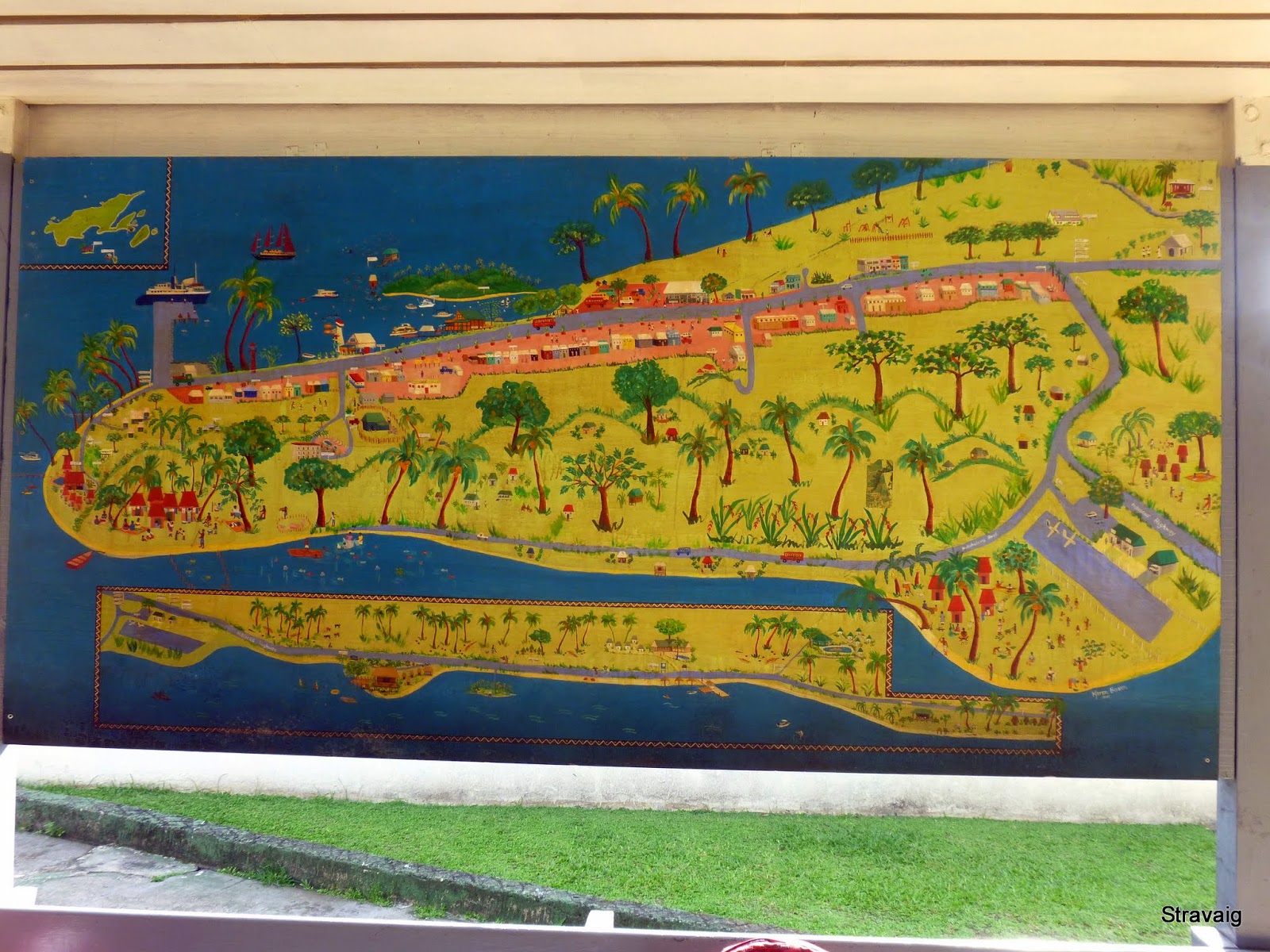 |
| Map of Savusavu at Savusavu Airport |
 |
| Airplane taking us from Savusavu to Suva |
 |
| Jeff under a kapok tree |
 |
| Kapok Seed |
 |
| Main anchorage in Port Vila |
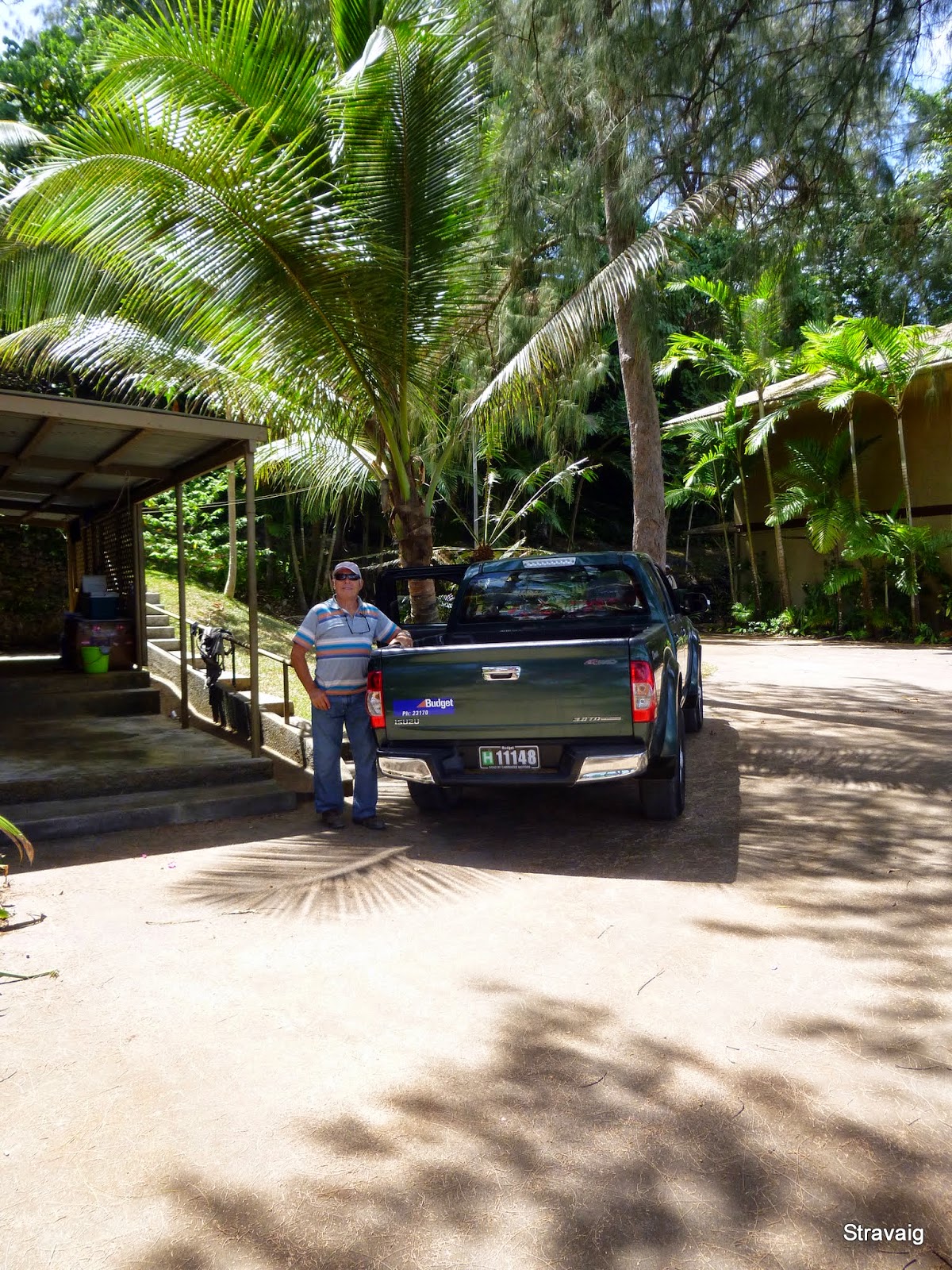 |
| Jeff waiting for his friend to take us around the island. |
 |
| Having a great lunch with John and Nia and some new friends in Vanuatu. |
 |
| And a late Chinese meal, the last one we will have for a while with John and Nia as they are not coming to Fiji for a while. |
The visit was
over far too quickly and we flew back to Fiji
and got on with the serious business of renovating part of
the Savusavu Marina building until in January we were able
to open the door and were allowed to begin treating the local animals legally.
and got on with the serious business of renovating part of
the Savusavu Marina building until in January we were able
to open the door and were allowed to begin treating the local animals legally.
Some people
from the local Fijian Village who often come to
Savusavu Marina to help with ongoing work, offered to do a
ceremonial opening of our clinic. This took the form of a
Kava Ceremony or Sevusevu which was beautifully
performed for us by Sitiveni, (Stephen) and his wife and
children. It was very impressive indeed.
Savusavu Marina to help with ongoing work, offered to do a
ceremonial opening of our clinic. This took the form of a
Kava Ceremony or Sevusevu which was beautifully
performed for us by Sitiveni, (Stephen) and his wife and
children. It was very impressive indeed.
The building where the clinic is going to be in Savusavu Marina.
Arnold, our Dutch friend from Drifter, helped with the painting, while his wife Coby offered to make it all look nice and make curtains!
This will be the storeroom/kennel area.
Ryan Fong building the countertop with sink.
A little bit more organised!
Jeff with three Australian volunteer vets on the opening day.
The new sign going up.
The "ribbon" that Jeff will cut after the Sevusevu Ceremony performed by Sitiveni and his family.
Sitiveni's son Eparama and grandson Malakai in their traditional costumes.
Sitiveni
His daughter Maria
Malakai
His wife Teresia Bui.
And we can start!
It all still looks very empty, but we are ready for business, here a female dog being sterilized with the assistance of the three Aussie ladies.
Our new anesthetic machine, also a donation!
One of our Fijian clients with her dog with a skin problem.
And this little guy was looking for a home and just needed a check-up
 Christian, a French sailor we met in Wallis who happened to have a Coco de Mer on the boat! |
Reason for this bit of info is that when Jeff and I met in the Seychelles we were intrigued by these strange trees!!
The legends of the coco de mer are legends about the nut and tree of the coco de mer, a rare species of palm tree which isendemic to the islands of Praslin and Curieuse in the Seychelles archipelago in the Indian Ocean. Before the Seychelles were discovered and settled, nuts of this species were sometimes carried by the ocean currents to distant shores, such as those of the Maldives, where the tree was unknown. These floating nuts did not germinate. The exceptional size and suggestive form of the nut, the circumstances of its discovery, and some unusual qualities of the trees have given rise to several legends.

The nut of the coco de mer is very large (the largest seed in the plant kingdom) and is oddly shaped, being the shape and size of a woman's disembodied buttocks on one side, and a woman's belly and thighs on the other side. Not surprisingly, this nut was viewed by people in other parts of the world as a rare and fascinating object with mythological and evenmagical properties. The nature and origin of this extraordinary nut was mysterious, and the propagation of the tree was not understood. A number of legends arose both about the nuts, and about the trees that produce them.
The coco de mer palm has separate male and female trees, unlike the coconut palm. And, unlike the more familiar fruit of the coconut tree, the coco de mer fruit is not adapted to disperse naturally by floating on the ocean water. When a coco de mer fruit falls into the sea, it cannot float because of its great weight and density; instead it sinks to the bottom. However, after the fruit has been on the sea bed for a considerable period of time, the husk drops off, the internal parts of the nut decay, and the gases that form inside the nut cause the bare nut to rise up to the surface. At that time the nut can float, but is no longer fertile, thus when the ocean currents cause the nut to wash up on a distant beach, for example in the Maldives, a tree cannot, and does not, grow from the nut. The name coco de mer is French, and means "coconut of the sea".
Legends predating the discovery of the Seychelles[edit]
Malay seamen had seen coco de mer nuts "falling upwards" from the sea bed, and so they had reasoned that these nuts must grow on underwater trees, in a forest at the bottom of the Indian Ocean. According to Antonio Pigafetta and Georg Eberhard Rumphius, Malay people believed that the tree was also the home of the huge bird or bird-like creature Garuda(or Rukh of the Arabs).[1] African priests believed that the Garuda was capable of hunting elephants and tigers. The African priests also believe that sometimes the coco de mer trees rose up above the ocean surface, and when this happened, the waves that the trees created did not allow any ship nearby to sail away and the helpless sailors were eaten by the Garuda.[2]
The nuts that were found in the ocean and on the beaches no longer had a husk, and resembled the dismembered lower part of a woman's body, including the buttocks. This association is reflected in one of the plant's archaic botanical names, Lodoicea callipyge Comm. ex J. St.-Hil., in which callipyge is from the Greek words meaning "beautiful rump". Historically these floating "beautiful rumps" were collected and sold for a fortune in Arabia and in Europe.
In the Maldives, any coco de mer nuts that were found in the ocean or on the beaches were supposed to be given to the king, and keeping a nut for yourself or selling it could have resulted in the death penalty.[2] However, Rudolf II, Holy Roman Emperor was able to purchase one of these nuts for 4,000 gold florins. The Dutch Admiral Wolfert Hermanssen also received a nut as a gift for his services, from the Sultan of Bantam in 1602, for fighting the Portuguese and protecting the capital of Bantam. However, the nut that the admiral was given was missing the top part; apparently the Sultan had ordered the top of the nut to be cut off, in order not to upset the noble admiral’s modesty.[3][4] João de Barros believed that coco de mer possessed amazing healing powers, superior even to those of "the precious stone Bezoar".[4] In one of his books, Dr. Berthold Carl Seemann mentioned that many believed the nuts to be an antidote to all poisons.[2] The nuts were praised not only by scientists andbotanists, but also by poets. Luís de Camões wrote:
In 1769, Jean Duchemin sailed to Praslin, the second largest island in the Seychelles, on the ship L’Heureuse Marie. He loaded up with a cargo of these unusual nuts, which he later sold in Indian markets. After his trip, coco de mer nuts never again held the same extraordinary value.[4]
New legends about the coco de mer came into existence after 1743, when the real coco de mer trees were discovered. Fruits of Coco de Mer are developed only on female trees. Male trees have long phallic-looking catkins. Because of these unusual, erotic shapes, some people believed that the trees made passionate love on stormy nights. According to the legend, male trees uproot themselves, and approach female trees. Apparently the love-making trees are rather shy, and the legend has it that whoever sees the trees mating will die or go blind. The fact that even now the pollination of the coco de mer is not fully understood, is one of the factors behind the legend.[7][8][9]
In the Victorian era, General Charles George Gordon, who visited the Seychelles in 1881, believed that the Vallée de Mai on the island of Praslin was the original Garden of Eden as described in the Bible, and that the coco de mer was theforbidden fruit of the Tree of the knowledge of good and evil.[10] General Gordon wrote:
| “ | externally the coco-de-mer represents the belly and thighs, the true seat of carnal desires[11] | ” |
It occurred to at least some of Gordon's readers that if coco de mer was really the forbidden fruit, Eve would have had a very hard time handing this gigantic fruit (which weighs 15–30 kg) to Adam.[12]
One of our favorite restaurants here is an Indian place called
Hidden Paradise and Mambo and Stravaig were invited to their house to celebrate Divali, so a great excuse to wear our Saris again!
Diwali also known as Divali, Deepavali and the "festival of lights", is an ancient Hindu festival celebrated in autumn every year.[3][4]The festival spiritually signifies the victory of light over darkness, knowledge over ignorance, good over evil, and hope over despair.[5][6][7] The festival preparations and rituals typically extend over a five day period, but the main festival night of Diwali coincides with the darkest, new moon night of the Hindu Lunisolar month Kartik. In the Gregorian calendar, Diwali night falls between mid-October and mid-November.
Before Diwali night, people clean, renovate and decorate their homes.[8] On Diwali night, Hindus dress up in new clothes or their best outfit, light up diyas (lamps and candles) inside and outside their home, participate in family puja typically to Lakshmi - the goddess of wealth and prosperity. After puja (prayers), fireworks follow,[9] then a family feast including mithai (sweets), and an exchange of gifts between family members and close friends. Diwali also marks a major shopping period in nations where it is celebrated.[10]
Diwali is an important festival for Hindus. The name of festive days as well as the rituals of Diwali vary significantly among Hindus, based on the region of India. In many parts of India,[11] the festivities start with Dhanteras, followed by Naraka Chaturdasi on second day, Diwali on the third day, Diwali Padva dedicated to wife-husband relationship on the fourth day, and festivities end with Bhau-beejdedicated to sister-brother bond on the fifth day. Dhanteras usually falls eighteen days after Dussehra.
Galena, our friend Bill's boat is still our neighbor and this was taken with the full moon.
Tim, the very casual cat.
Every week a friend who lives here brings us fresh flowers from her garden,absolutely beautiful!
Every full
moon it has been Jose's habit for some years to be
the 'instigator' of full moon parties, which involve all the other
cruising boats. They usually were done aboard Stravaig but
now that we are moored amongst other boats at a marina,
recent parties have been held ashore. We decided also that
it would be a great place for all of us to get together and
celebrate Christmas and this special Christmas party proved
to be a great success.
the 'instigator' of full moon parties, which involve all the other
cruising boats. They usually were done aboard Stravaig but
now that we are moored amongst other boats at a marina,
recent parties have been held ashore. We decided also that
it would be a great place for all of us to get together and
celebrate Christmas and this special Christmas party proved
to be a great success.
We gave the
Savusavu Marina a break at New Year and we
went up to the Savusavu Planters Club where a friend was
the DJ for a great evening of music and dance.
went up to the Savusavu Planters Club where a friend was
the DJ for a great evening of music and dance.
This was traditionally a
place for planters to come and drink when they brought in the copra, and some
of their descendants can still be found clustered around the bar today. It’s a
whiff of colonialism and teeming with expats. Happy hour is from 5.30pm to
6.30pm. Once a month the club holds a Sunday-lunch lovo .
Perhaps we
should mention that between September 2013
and the beginning of the cyclone season November 1st; we
did manage to organize materials, divers and layout for the
remaining moorings bringing the grand total to 16.
The occupants of these moorings included a couple of great
divers and they have continued with improvements to the
whole system. One of the boats here, during a small tropical
storm managed to cut its mooring ropes with its keel and
ended up high and dry on the only sandy spot in the bay
right in front of Yaroi village. Everybody joined in to ensure
the boat was safely refloated and within 48 hours she was
safely back afloat.
and the beginning of the cyclone season November 1st; we
did manage to organize materials, divers and layout for the
remaining moorings bringing the grand total to 16.
The occupants of these moorings included a couple of great
divers and they have continued with improvements to the
whole system. One of the boats here, during a small tropical
storm managed to cut its mooring ropes with its keel and
ended up high and dry on the only sandy spot in the bay
right in front of Yaroi village. Everybody joined in to ensure
the boat was safely refloated and within 48 hours she was
safely back afloat.
Other this incident
the remainder of the cyclone season
passed uneventfully. We hope this year is just as kind to us.
passed uneventfully. We hope this year is just as kind to us.
Jeff on his way to help get our friend's boat off the beach
Always sad to see a boat like this, she was lucky and had no damage after being on the beach for 48 hours.
Interesting flipflops on the beach.
Easter brunch
The men (Jeff and Tim) doing outboard engine maintenance.
Bilibili going fishing, note the seats.
All getting together ashore to go to Naidi village for a Lovo.
(see last blog post for what a Lovo is)
Dinghy cover I helped make for some friends here.
Best Kava Shop in town
Kava Roots
Savusavu Market
More Kava
My favorite lady at the market.
Beautiful hand made baskets
Savusavu Main street
In May Jose
went home to Holland to help celebrate her
Dad's 80th birthday, came back with a new hydraulic knee
for Jeff and 5 kilos of Dutch cheese! Which by the way you
are not allowed to import, unless you apply for a one time
import permit, then you can bring up to 20 kilos! (And of
course pay a small fee for the permit)
Dad's 80th birthday, came back with a new hydraulic knee
for Jeff and 5 kilos of Dutch cheese! Which by the way you
are not allowed to import, unless you apply for a one time
import permit, then you can bring up to 20 kilos! (And of
course pay a small fee for the permit)
Cats looking for homes in the Animals Fiji clinic in Nadi where I spent some hours on the way to Holland
Fiji policeman in uniform at the airport.
The end of
July our friends Bernard and Millie from
the
Yacht Rainbow Shadow were married at a beautiful beach
house and the villagers, ex-pats and yachties all turned up to
celebrate and wish the happy couple the best for the future.
Yacht Rainbow Shadow were married at a beautiful beach
house and the villagers, ex-pats and yachties all turned up to
celebrate and wish the happy couple the best for the future.
No need for
more description, the photos speak volumes!
Following are photos of the wedding of Bernard and Millie, these are a lot of our friends here from yachts and living ashore.
Robin, owner of Savusavu Marina.
His wife Tue who is from Rotuma, Fiji's most northerly island.
Heinz, from Mambo
Jay, lives on land
????????
Ryan, our carpenter
Turika, from Yaroi Village
Gaby from Larrikin
Gaby and Peter
Turikas friend Angie
Andy, Elsie's husband, lives on land
And Elsie
Millie, Gary's wife
And Gary, whom Jeff met in 1982 in Tahiti
Stefan, we met him a couple of years ago in the Marquesas.
Morgan, the ex-chicken, now sheep man!
Tue and the brides daughter
( complicated!)
Millie the beautiful bride!
The Fijian pastor and his assistant.
Millie refused to be married in her flipflops so barefoot is was!
Bernard and Millie taking their vows.
Within a few
days we were off to Taveuni to conduct a much
heralded veterinary visit.
heralded veterinary visit.
The local
people on the island had organized our daily
agendas and had provided a beautiful house in which we
could stay. We treated a large number of animals, approx. 50
sterilizations, vaccinations and other small operations.
Taveuni is a beautiful place and we had ample opportunity to
see most of the island on the last day we were there.
agendas and had provided a beautiful house in which we
could stay. We treated a large number of animals, approx. 50
sterilizations, vaccinations and other small operations.
Taveuni is a beautiful place and we had ample opportunity to
see most of the island on the last day we were there.
The boat trip
to and from the island was very pleasant and
we went past the famous dive spots of Rainbow Reef.
we went past the famous dive spots of Rainbow Reef.
RAINBOW
REEF
In
the translucent blue waters separating Vanua Levu and Taveuni — the second and
third largest islands of Fiji — lies the Rainbow Reef. Among its many wonders
is the Great White Wall, a sunken escarpment blanketed in luminescent white
corals.
Consistently
rated as one of the world's best dive sites, the wall is reached via a tubular
swim-through and starts at a depth of 20 m. Between a tangle of flexible,
treelike soft coral are explosions of the harder stuff, home to millions of
beautifully colored anthias and other pelagic fish. Larger species of marine
life lurk there too, including manta rays, barracuda and harmless reef sharks.
This
striking environment is the product of a rare phenomenon that sees a large
volume of seawater forced through the narrow, shallow passage that is the
Somosomo Strait. The pressure creates strong currents brimming with nutrients
eagerly anticipated by the marine life, in particular the soft corals, which
expand to their most enchanting at feeding time.
The clinic all empty just before our visit to Taveuni.
Bobby our driver picked us up from Savusavu and drove us two hours to Buca Bay where we were met by the boat from Sau Bay Resort.
The Sau Bay Resort boat took us to Taveuni after we had a lovely breakfast there.
The staffroom at the Taveuni Bay Resort which we could use as the clinic for the whole week.
Dog castration
Cat spay
Our luxury room at the Sau Bay Resort!
St Andrew's Cross Spiders are named for their bright web decorations - zig-zag ribbons of bluish-white silk that form a full or partial cross through the centre of the orb web. Females have a silvery carapace and a silver, yellow, red and black banded upper abdomen with two longitudinal yellow stripes below. The spider sits with the legs in pairs. The brown and cream coloured males are smaller than females.
The cream-coloured young spiders make a circular stabilimentum (like a white silk doily) that disguises them well and may also act as a sunshade. As the spider grows the 'doily' is gradually transformed into a 'cross'.
- See more at: http://australianmuseum.net.au/St-Andrews-Cross-Spider#sthash.JYGl5AFt.dpuf

And this nut we found at a party, its called the Puzzle Nut, quite a challenge to put it together!
Puzzles do not normally grow on trees - but this one is the exception! The proper name for the tree that the nut comes from is Xylocarpus granatum, but it is also known as the Patience Tree or the Cannonball Mangrove. It is found in East Africa and Southeast Asia, and the wood is used locally for making canoes and also for the production of charcoal. The fruit can be the size of a large orange, or even bigger, and in the middle is a woody capsule containing a number of seeds.
The number of seeds can vary apparently, with anything up to 16. However the particular interest for us is the fact that they interlock so beautifully. However putting the pieces back together is not so easy! Another name for this is the Monkey Puzzle Nut, or I suppose you could think of it as nature's own Rubik Cube!
Sunset at Cousteau, our favorite anchorage about an hour from our mooring in Savusavu. Close to a baeutiful reef, lovely for snorkeling and nice and quiet, we go there often for a few days.
Stravaig
A whole school of squid coming to great you when you anchor at Cousteau.
And of course some more pictures of Tim!
Not sure if this is going to be enough for my evening meal!
His favorite sleeping position.
Spring cleaning the bathroom
Much easier with Tim's help!
And here is the clinic being used as my sewing room to make the shopping bags, much easier then on the boat.
Some of the finished product,
approved by Tim
Another full moon party starting!
And that was
our year in a nutshell, including Jose's 58th
birthday this year and our 25th wedding anniversary the 4th
of October which we enjoyed with some good friends and a
great meal ashore!
birthday this year and our 25th wedding anniversary the 4th
of October which we enjoyed with some good friends and a
great meal ashore!
About the bag
project: It all started when Yvonne, a
Swiss
friend from the boat Momo gave me a hand made bag for
shopping to help stop people using plastic bags. She had
been making bags from materials she bought in every
country or island they visited and always made two and gave
them away to mostly cruising friends and some to local
women here in Fiji.
friend from the boat Momo gave me a hand made bag for
shopping to help stop people using plastic bags. She had
been making bags from materials she bought in every
country or island they visited and always made two and gave
them away to mostly cruising friends and some to local
women here in Fiji.
I thought it
a great idea and wanted to do something with it
and made plenty of bags and started giving them away to
friends here in Fiji and asked them to make the same bag
and give it away to another friend in the hope we can make
a
small difference in the amount of plastic being used here. I
am now almost finished making a simple pattern to give with the bag to make it easier for people to make them.
and made plenty of bags and started giving them away to
friends here in Fiji and asked them to make the same bag
and give it away to another friend in the hope we can make
a
small difference in the amount of plastic being used here. I
am now almost finished making a simple pattern to give with the bag to make it easier for people to make them.
There are
several in Holland, Australia and New Zealand
and
I hope one day someone will give me a bag and ask me to
make one to give away!
and
I hope one day someone will give me a bag and ask me to
make one to give away!
Esther has
been a great help to donate the money so I can
keep making them and in future we want to keep track of the
amount of bags being made and where they go to.
keep making them and in future we want to keep track of the
amount of bags being made and where they go to.
And yes the cheese did arrive safely in Fiji!!!































.JPG)








































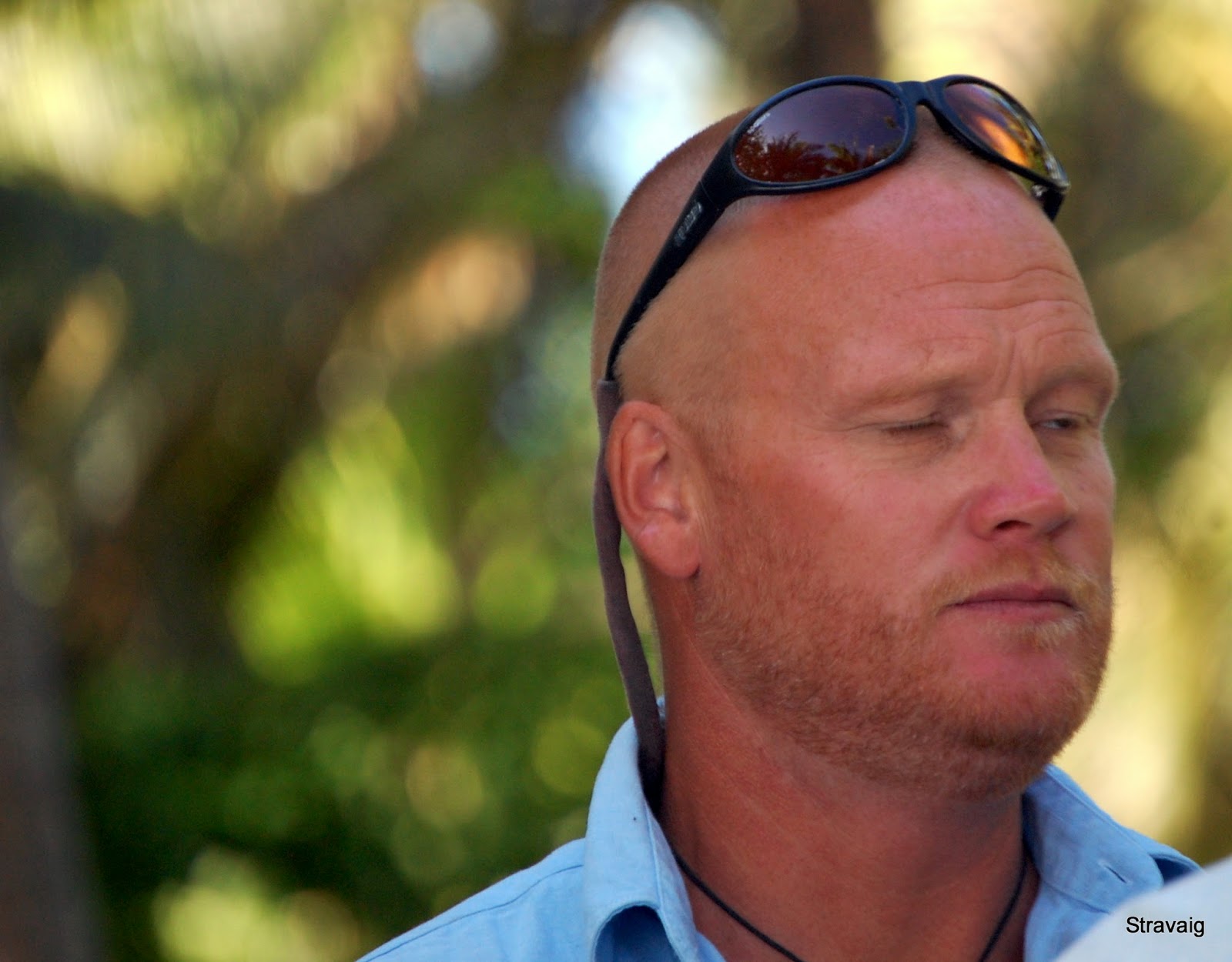















.JPG)


.JPG)



















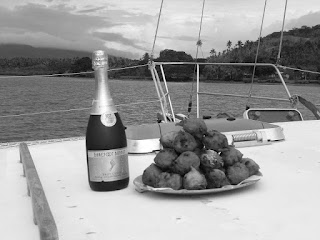
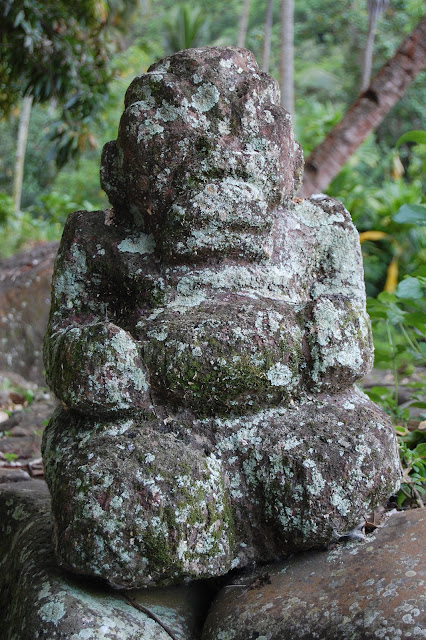
Comments